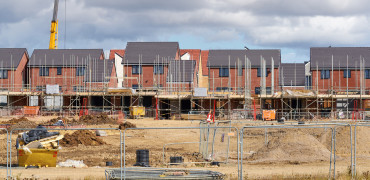What exactly is “clean growth”?
Put simply, the government definition of “clean growth” is to grow our national income while cutting greenhouse gas emissions. Achieving clean growth, while ensuring an affordable energy supply for businesses and consumers, is at the heart of the UK’s Industrial Strategy.
Regarding this, PM Theresa May said “Clean growth is not an option, but a duty we owe to the next generation.”
The good
The Domestic Renewable Heat Incentive has already enabled householders to install over 55,000 low carbon heating technologies such as heat pumps, biomass boilers and solar water heating.
Our homes and commercial buildings have become more efficient in the way they use energy which helps to reduce emissions and also cut energy bills. Average household energy consumption has fallen by 17% since 1990.
The bad
Considering our small size, you may be shocked to hear that the UK currently produces around 2% of global greenhouse gas emissions – making it the 8th largest emitter in the world. According to the Carbon Trust, nearly 50% of the CO2 emissions produced by the UK come from heating and cooling buildings.
Despite recent improvements in efficiency, homes are still responsible for 13% of carbon emissions in the UK today.
The ugly
Scientists agree that the earth’s rising temperatures are fuelling longer and hotter heat waves, more frequent droughts, heavier rainfall, and more powerful storms.
The impacts of global warming are already being felt across the globe.
Extreme heat waves have caused tens of thousands of deaths around the world in recent years. Antarctica has been losing about 134 billion metric tons of ice per year since 2002. This rate could speed up if we keep burning fossil fuels at our current pace, causing sea levels to rise several meters over the next 50 to 150 years. This would cause untold devastation on our forests, farms, and cities, and the loss of both human and animal life would be astronomical.
However…
Whilst this is all very real and frightening, the saving grace is that we can prevent this awful fate – but only if we all do our bit. We must continue to improve the energy efficiency of our homes, and according to the ‘Clean Growth Strategy’, the government intend to support this.
Around £3.6 billion of investment will be made available to upgrade around a million homes through the Energy Company Obligation (ECO), and extend support for home energy efficiency improvements until 2028 at the current level of ECO funding. Plans are also in place to reform the Renewable Heat Incentive, with £4.5 billion allocated to support innovative low carbon heat technologies in homes and businesses.
By 2050, we will likely need to fully decarbonise how we heat our homes. We will also need to avoid new homes needing to be retrofitted later and ensure that they can all accommodate low carbon heating. This could involve all new homes off the gas grid from the mid-2020s being heated by a low carbon system, such as a heat pump.
In summary
Climate change poses a terrible threat to every single life on this planet. Energy from fossil fuels consumed in the construction and operation of buildings accounts for approximately half of the UK’s emissions of carbon dioxide. Construction materials account for 20% of the UK’s ecological footprint, 19% of the UK’s total greenhouse gas emissions and 30% of all UK freight transport. We have an almighty task on our hands, and the housing sector has a duty to rise to meet the challenge.
Joe Bradbury is Assistant Editor of Housing Association Magazine.



